-
News & Events

From May 19th to 23rd, 2025, Prof. Donati, the World-class Master of Bone Tumor, the Head of the Orthopaedic Oncology Unit and one of the founders of the Musculoskeletal Tissue Bank of Rizzoli Orthopaedic Institute, Bologna, Italy, visited the Shenzhen Second People's Hospital as an international visiting professor for the second time, and carried out a series of academic exchange activities in the hospital, including patient consultation, ward rounds, surgical guidance, internal lectures for training, discussions on department management and complex cases, and public lecture, etc.
From May 19th to May 23rd, Prof. Donati, the World-class Master on Bone Tumor, visited Shenzhen Second People's Hospital for the second time as an international visiting professor. The Rizzoli Orthopaedic Institute in Italy, where Prof. Donati works, is ranked as one of the top ten orthopaedic institutions in the world by Newsweek in 2025. It has a history of over 100 years in the treatment of bone and soft tissue tumors, and is recognized as the most famous bone tumor center in Europe and even around the world. During the one-week visit, Prof. Donati, accompanied by SUN Wei, Director of Department of Bone and Joint Surgery and Musculoskeletal Tumor Surgery and Director LI Wei, Dr. ZHENG Chuanxi and Dr. XU Gang from the bone tumor team, continued to share the diagnosis and treatment concepts and clinical experiences in bone and soft tissue tumors of Rizzoli Orthopaedic Institute through a series of activities, like outpatient clinics and ward round, surgical guidance, discussion of difficult cases, training on department management and public lecture, etc. The academic exchanges with the bone tumor team were not only about discussing a specific points or purely surgical techniques, but also focused on the establishment of bone tumor center, the training of bone tumor surgeon, and multidisciplinary collaboration, etc. Prof. Donati pointed out that these are the three key factors to evaluate the capability of providing professional treatment for bone tumor patients in a region. And the improvement of them needs to be addressed by the local government, the leaders of hospitals, as well as surgeons and related medical staffs in a joint effort. Bone tumor surgery is completely different from orthopedic surgery, and its diagnosis and treatment concepts are also a totally different thing. Bone tumor surgeons should not only learn to be a surgeon, but also should learn to be a scientist in bone oncology. This requires them to learn knowledge about oncology, accumulate extensive experience in treating bone tumors, and conduct a large amount of scientific research, in this way they could grow to be a qualified bone tumor surgeon; In addition to be equipped with medical equipment, a well-functioning bone tumor center requires an experienced multidisciplinary bone tumor team, including bone tumor surgeons, pathologists, medical oncologists, imaging specialists, radiologists, and so on. With reference to the number of bone tumor centers in Europe and the incidence rate of bone tumors, one bone tumor center is needed for a region with a population of 10 million people. Shenzhen, with a current population of approximately 17 million, would require the establishment of two bone tumor centers to adequately meet the clinical needs of local patients with bone tumors. Therefore, Prof. Donati suggested that the local bone tumor patients can be collected and sent to one or two bone tumor centers in Shenzhen for treatment, instead of being treated in different local hospitals. Because this approach allows for the accumulation of extensive clinical experience in bone tumor treatment, which not only facilitates the development of a specialized multidisciplinary team focused on bone tumors but also enhances scientific research capabilities. On the last day of the visit, the whole bone tumor team of Shenzhen Second People's Hospital sent Prof. Donati off and expressed their sincere thankfulness for his one-week guidance and sharing. In March 2026, Shenzhen Second People's Hospital will send a young doctor to visit the Department of Orthopaedic Oncology of Rizzoli Orthopaedic Institute for fellowship. After returning home, we hope that he could bring more advanced concepts from abroad and contribute to the building of a specialized bone tumor center in the region.
Welcome Ceremony
On the morning of May 19th, SUN Wei, Director of Department of Bone and Joint Surgery and Musculoskeletal Tumor Surgery at Shenzhen Second People's Hospital, together with his bone tumor team, including Dr. LI Wei, Dr. ZHENG Chuanxi, Dr. XU Gang, and other medical staff, attended the welcome ceremony held for Prof. Donati, who had traveled from afar to visit, and expressed their sincere hope for more in-depth exchanges with Prof. Donati in the following week.


After the welcome ceremony, Prof. Donati, accompanied by the bone tumor team, went to the ward rounds, and discussed 13 cases with the team, which included patients with bone metastases, soft tissue sarcomas, and other bone tumors. Their discussion specially focused on the use of bone cement, the identification of tumor margin, and the application of radiotherapy and chemotherapy.
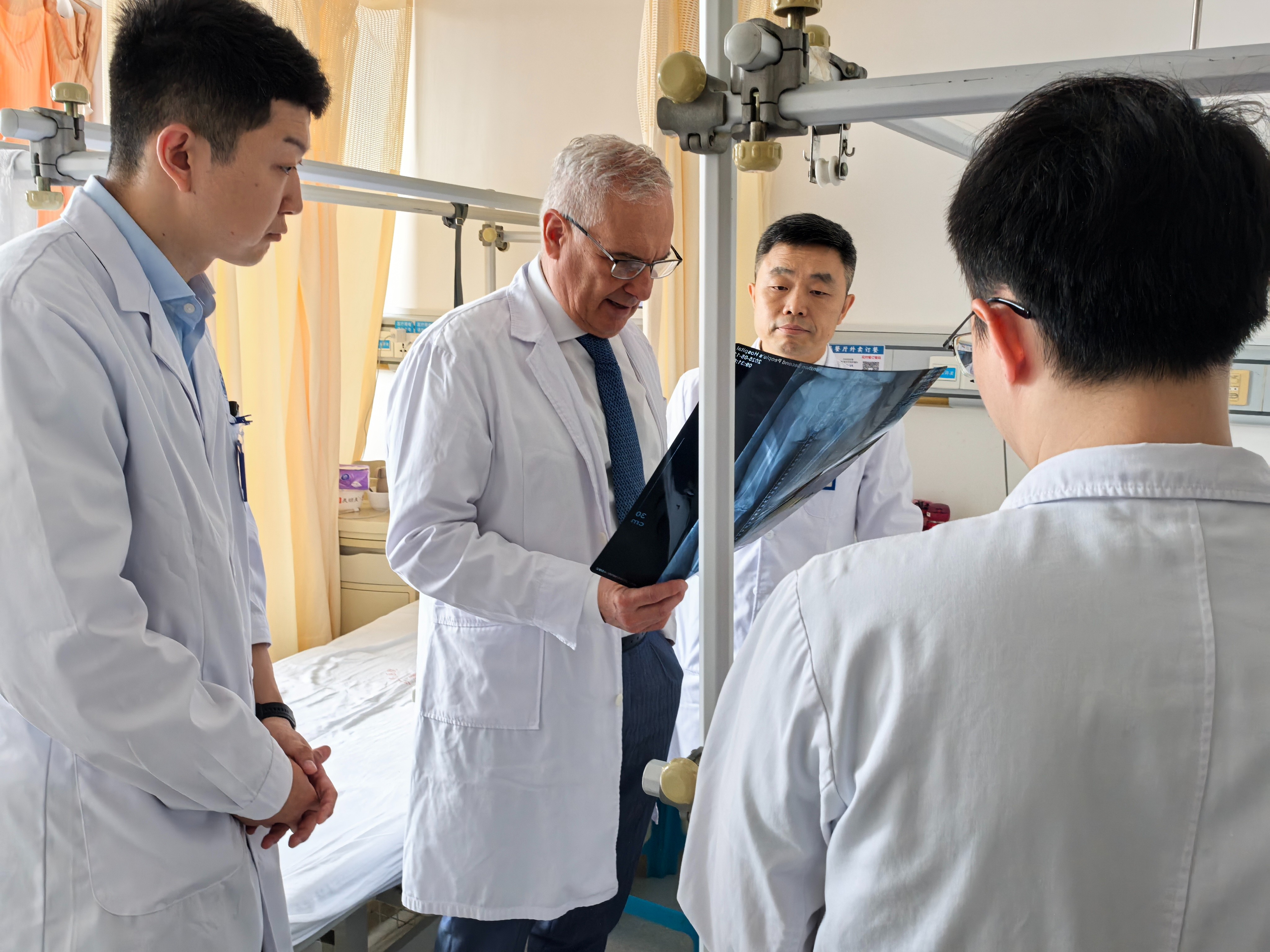
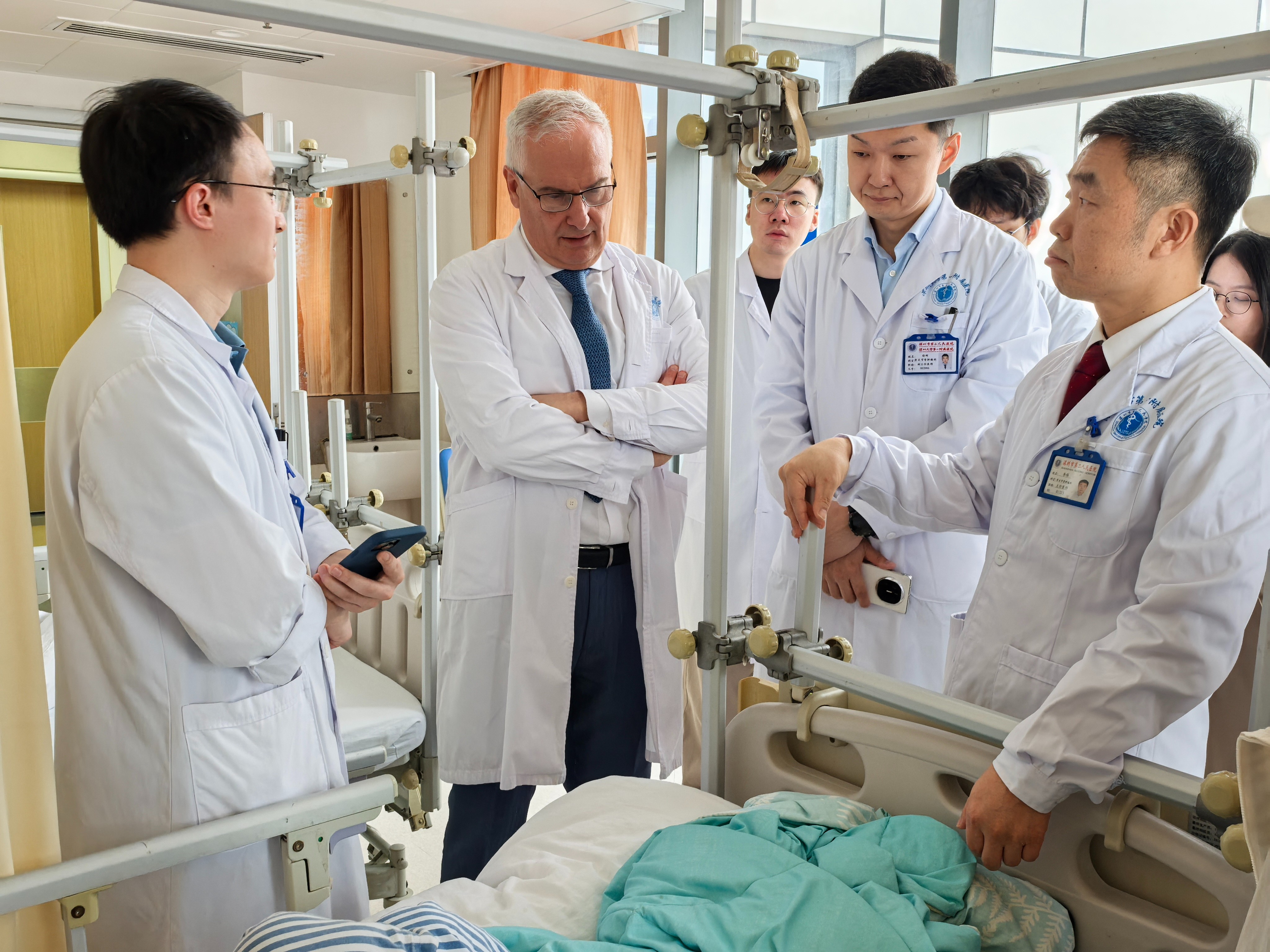
During the internal exchange session in the afternoon, Prof. Donati shared a lecture titled “The Actual Treatment of Soft Tissue Sarcomas,” providing a detailed introduction of benign and malignant soft tissue sarcomas, the standardized application of radiotherapy and chemotherapy, and individualized treatment plans for tumors of different degrees of invasiveness to the soft tissue or bone. He also shared his experience in treating myxofibrosarcoma. In the whole afternoon, Prof. Donati had engaged in a lively discussion with the bone tumor team, which yielded valuable insights for the team.
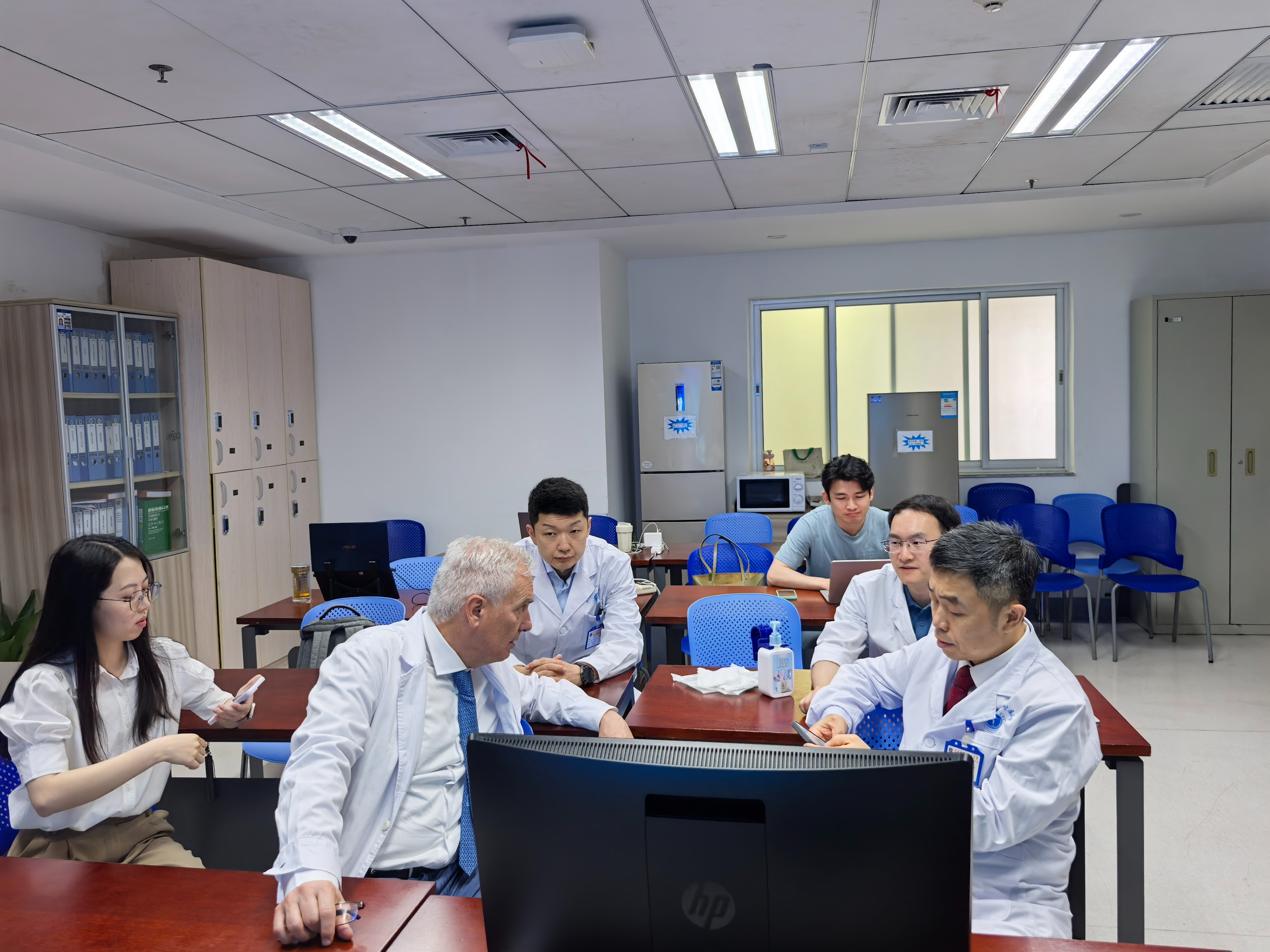
At the end of the discussion, Director LI Wei said that, “This academic exchange with Prof. Donati marked a qualitative leap forward as our discussions not solely focused on surgical techniques, but emphasized more on the diagnostic and treatment concepts for bone tumors. The clinical philosophy and treatment strategies shared by Prof. Donati have opened up new ideas for us and hold significant guiding significance for enhancing the overall diagnostic and treatment capabilities of our department.”
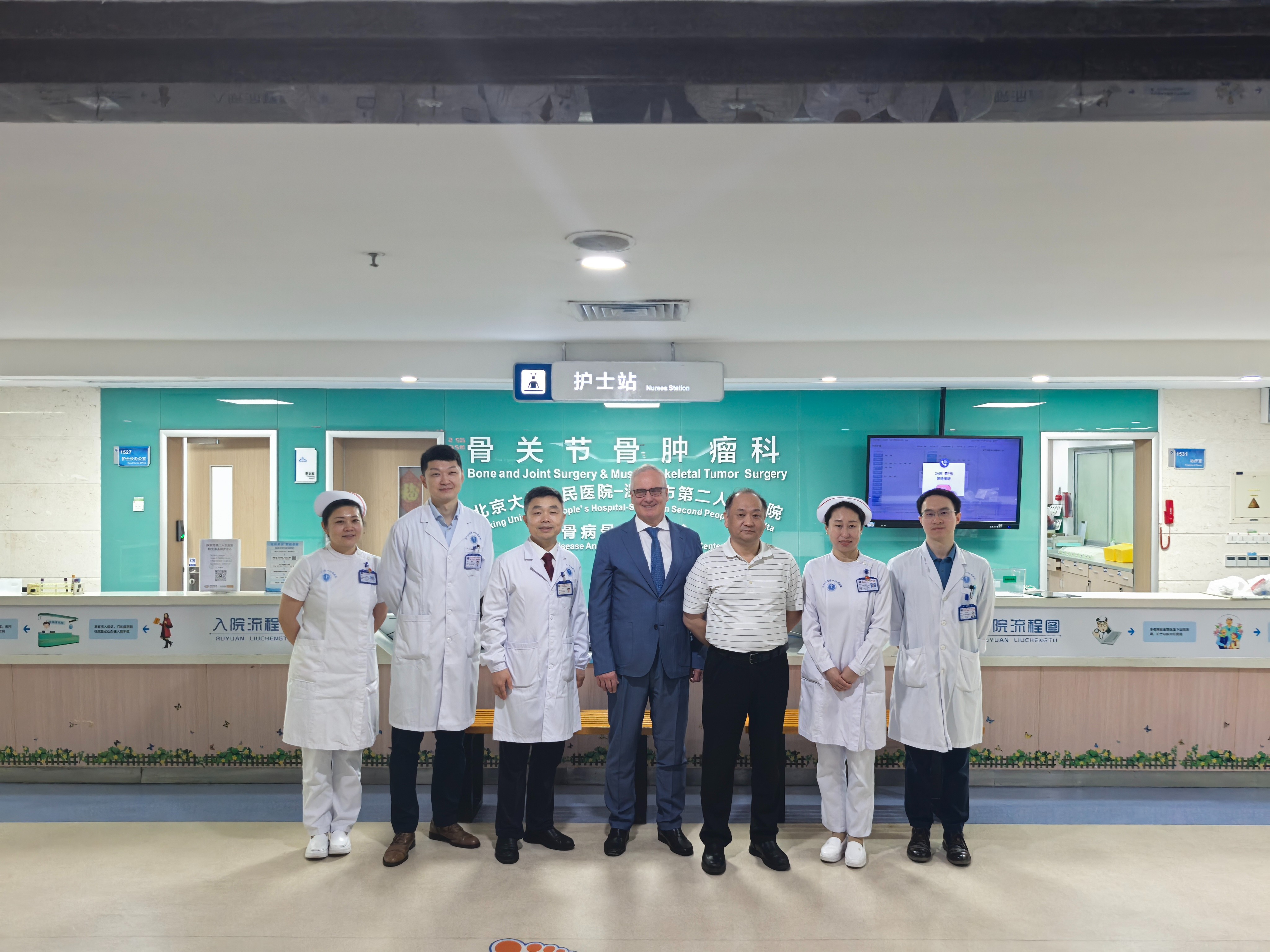
Complex Case Discussion
On the morning of May 20th, Prof. Donati and the MDT team for bone tumors of the Shenzhen Second People's Hospital held an in-depth discussion on five complex cases, three of which were patients scheduled for surgery the following day. Prof. Donati shared that every case discussed by the MDT team at the Rizzoli Orthopaedic Institute will be documented with a detailed report, which is served for future scientific research.
During the discussion, Prof. Donati emphasized that the diagnosis and treatment plan for bone tumor patients must be determined based on pathological results. Therefore, having experienced pathologists in the MDT team is very crucial, and bone tumor specialists must maintain good communication with pathologists.
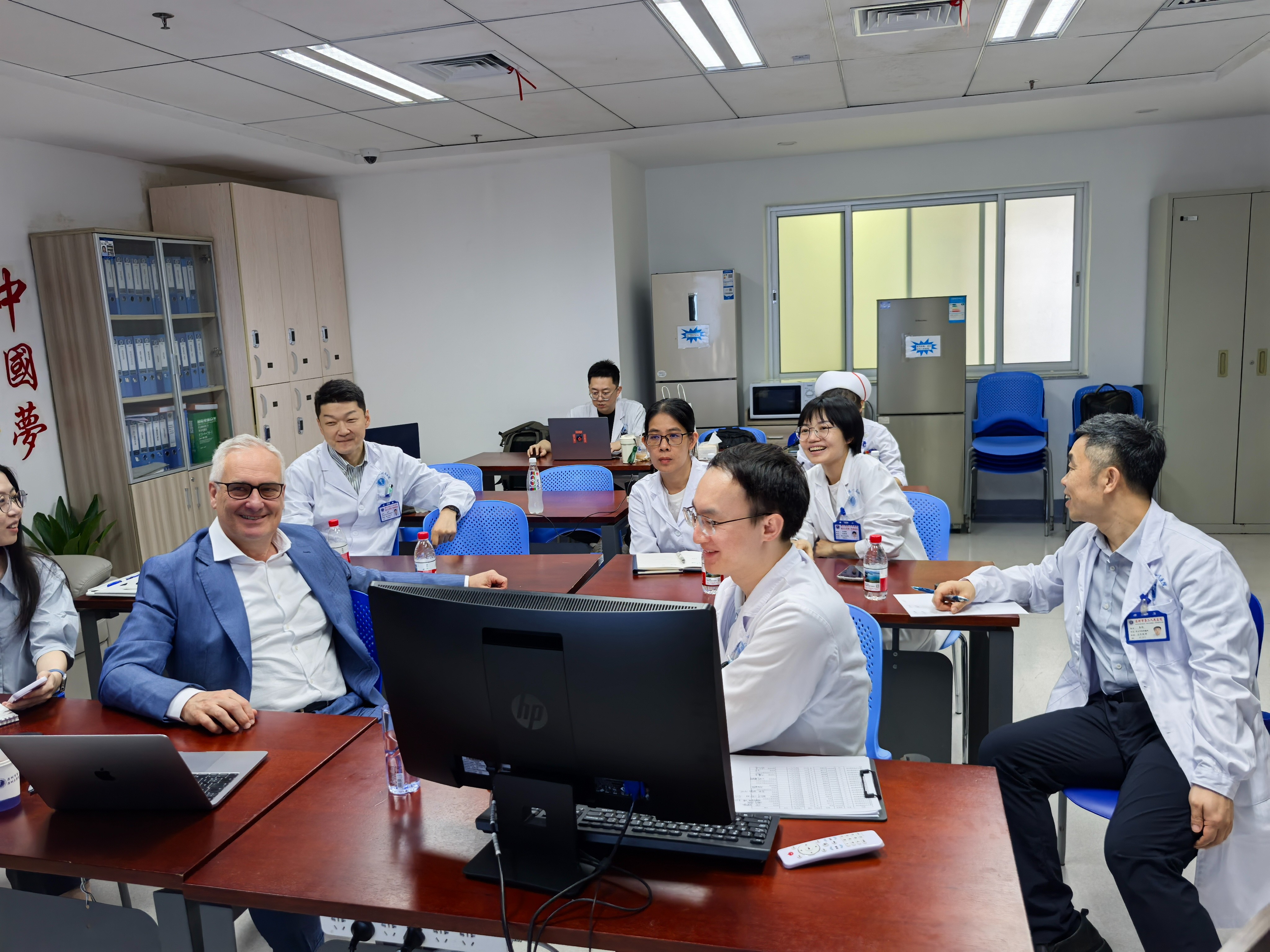
In the afternoon, Prof. Donati delivered two academic lectures, which were “Actual treatment of giant cell tumor of bone” and “Biological reconstruction of bone defects of limbs and its key techniques”. In the first lecture, Prof. Donati gave an introduction of giant cell tumor of bone, shared technical notes of surgical treatment for giant cell tumor of bone (curettage and resection), and the use of denosumab, and combined his lecture with literature reports and specific cases. In the second lecture, he introduced different types of grafts and their indications, and specifically shared his experience in the reconstruction techniques with allograft in long bones and adjacent joint areas, as well as biological reconstruction in pediatric patients, providing the team with a deeper understanding of the biological reconstruction techniques at the Rizzoli Orthopaedic Institute.
Surgical Guidance
On the morning of May 21st, Prof. Donati arrived at the operating room of the hospital to provide surgical guidance. Today's surgical case was discussed yesterday by Prof. Donati and the MDT team for bone tumors. After arriving at the operating room, Prof. Donati, together with Director LI Wei and Dr. ZHENG Chuanxi, performed a radical resection of the distal femoral osteosarcoma and a customized artificial joint replacement on a 25-year-old male patient.
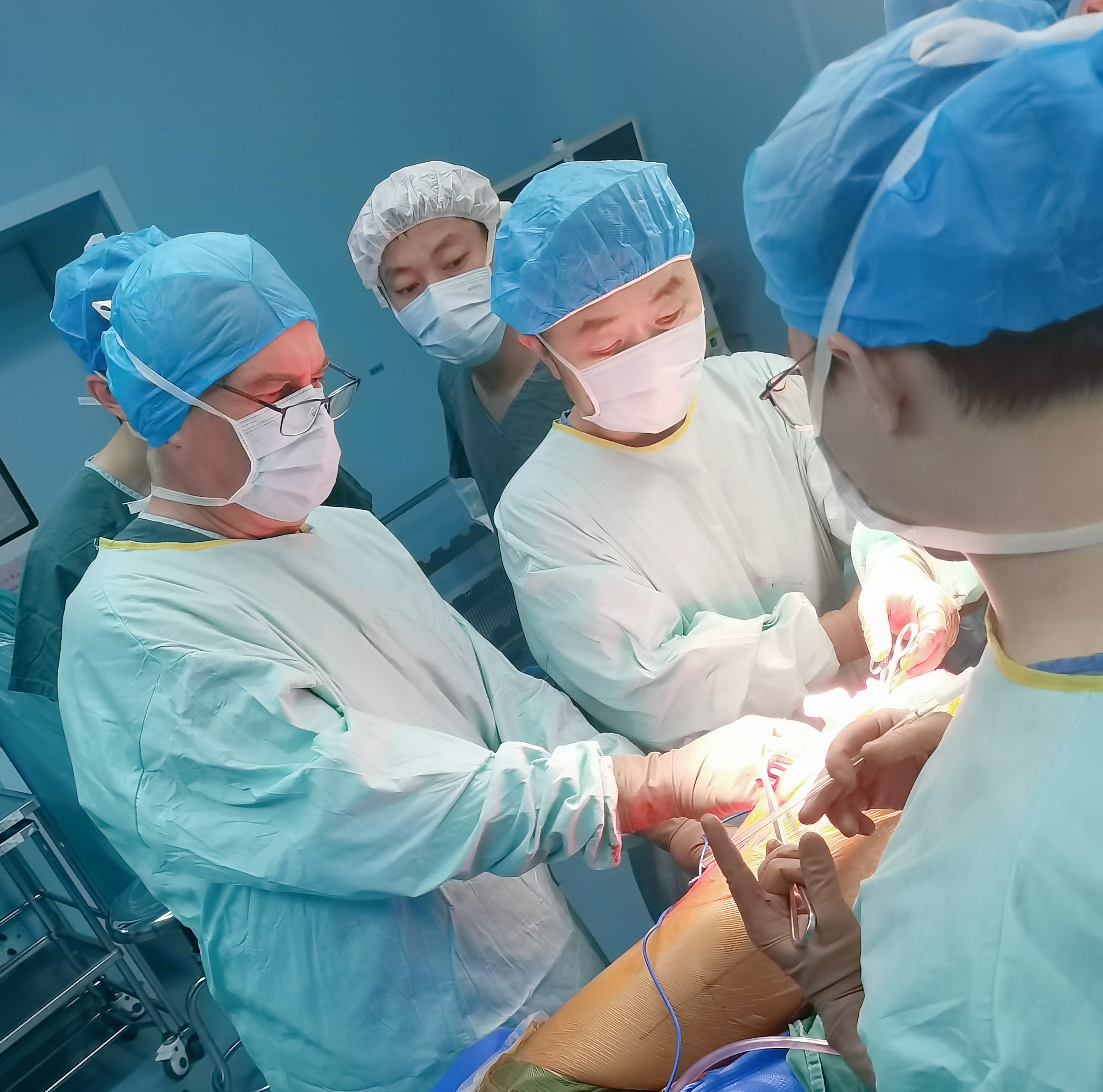
Before the surgery, Prof. Donati shared different options of surgical approach, emphasizing that the lateral approach should be recommended for such cases. The advantages of this approach include: ① better exposure of the surgical field, facilitating tumor resection; ② having flexibility to adjust the incision size intraoperatively according to specific needs; ③ based on his team's clinical research findings, the incidence of postoperative complications is lower with the lateral approach compared to the internal approach. After three hours, they successfully completed the first surgery.
The second patient was a female with a soft tissue sarcoma of the femur, where the tumor had not invaded the deep tissues of the thigh. Prof. Donati successfully completed the surgery with Director LI Wei and Dr. XU Gang. During the surgery, Prof. Donati patiently provided surgical guidance, emphasizing the need to dissect the tumor from surrounding healthy tissues layer by layer without rushing. He also reminded the team to handle the suturing at the side of the knee joint gently, avoiding excessive tension during the final suturing stage.
Academic Lecture on Pelvic Metastases
On the morning of May 22nd, Prof. Donati delivered a lecture titled “Treatment of metastasis around the acetabulum” to the bone tumor team. He first shared the literature results, noting that most of bone metastases do not require a surgical treatment, and acetabular reconstruction in patients with pelvic metastasis is uncommon due to a demanding surgery with high risk of complications, such as dislocation and infection. However, he also shared that surgical treatment of pelvic metastases has its advantages, such as improving the patient's quality of life and having better pain control. By presenting specific cases, Prof. Donati provided a detailed explanation of situations under which surgical treatment for pelvic metastases may be selected, including curettage versus resection, as well as positioning, surgical approaches, and reconstruction techniques for patients with pelvic surgery of metastasis.
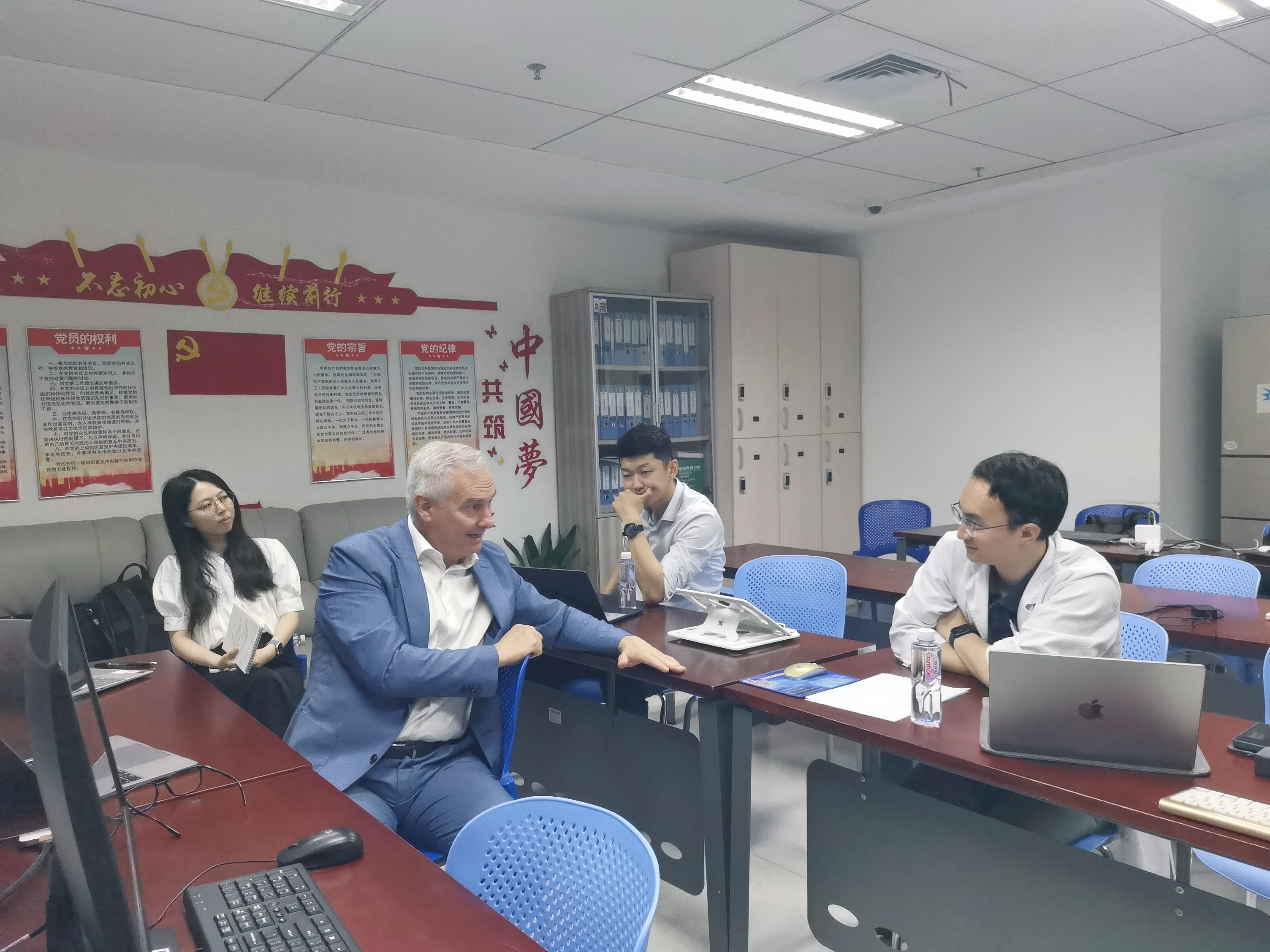
At the end of the lecture, he concluded that patient selection for pelvic metastasis surgery must be accurate; preoperative arterial embolization followed by curettage is the standard treatment for pelvic metastases. For the reconstruction surgery, wide cage, long screws, dual mobility cup are suggested to use. He also stressed that orthopedic surgeons must be trained in pelvic surgery before performing this surgery.
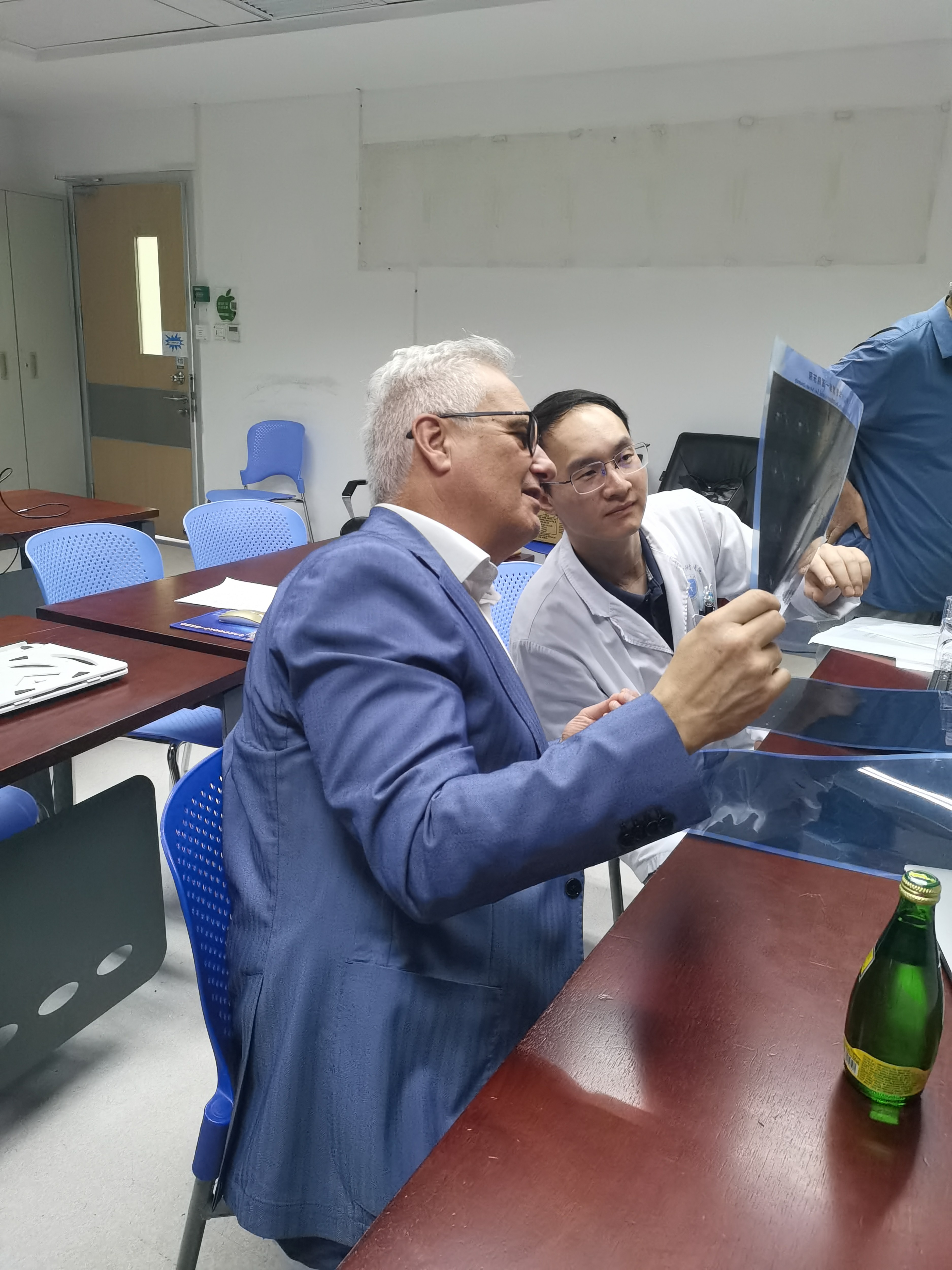

After the lecture, Prof. Donati answered questions from the surgeons onsite. Then, Chinese colleagues shared several previous complex cases and further discussed the following treatment plans with Prof. Donati.
Outpatient Consultation
On the afternoon of May 22nd, Prof. Donati conducted consultations for three patients who had traveled a long distance to see him. After thoroughly understanding their conditions, he performed physical examinations for them and discussed treatment plans with the bone tumor team.

After the consultation, Prof. Donati shared four challenging cases from Rizzoli, detailing his experience in treating rhabdomyosarcoma, chondrosarcoma, myxofibrosarcoma, and liposarcoma. Several of these patients had a history of multiple recurrences, with follow-up periods spanning over a decade. For each case, Prof. Donati provided a detailed explanation of the rationale behind the surgical treatment decisions made at the time.
He said that surgeons will meet approximately 10% of challenging cases in their career. They must have the determination and courage to handle these difficult cases, as such experiences contribute to enhancing their professional capabilities. When handling complex cases, in addition to patience, surgeons must also understand the principle that, “We are not only treating the disease, but also the person.”
Public Lecture
On the morning of May 23rd, Prof. Donati shared a lecture with the bone tumor team titled “Reconstruction of bone defects and management of limb shortening in later stages in children with bone tumors”, followed by case discussions on this topic. Prof. Donati emphasized that limb reconstruction in pediatric patients is totally different from that in adult patients. Before planning resection and reconstruction surgery for pediatric patients, it is essential to consider the future patient’s growth. During the lecture, he also shared his clinical practice on using magnetic lengthening nails for reconstruction after oncological surgery in children.
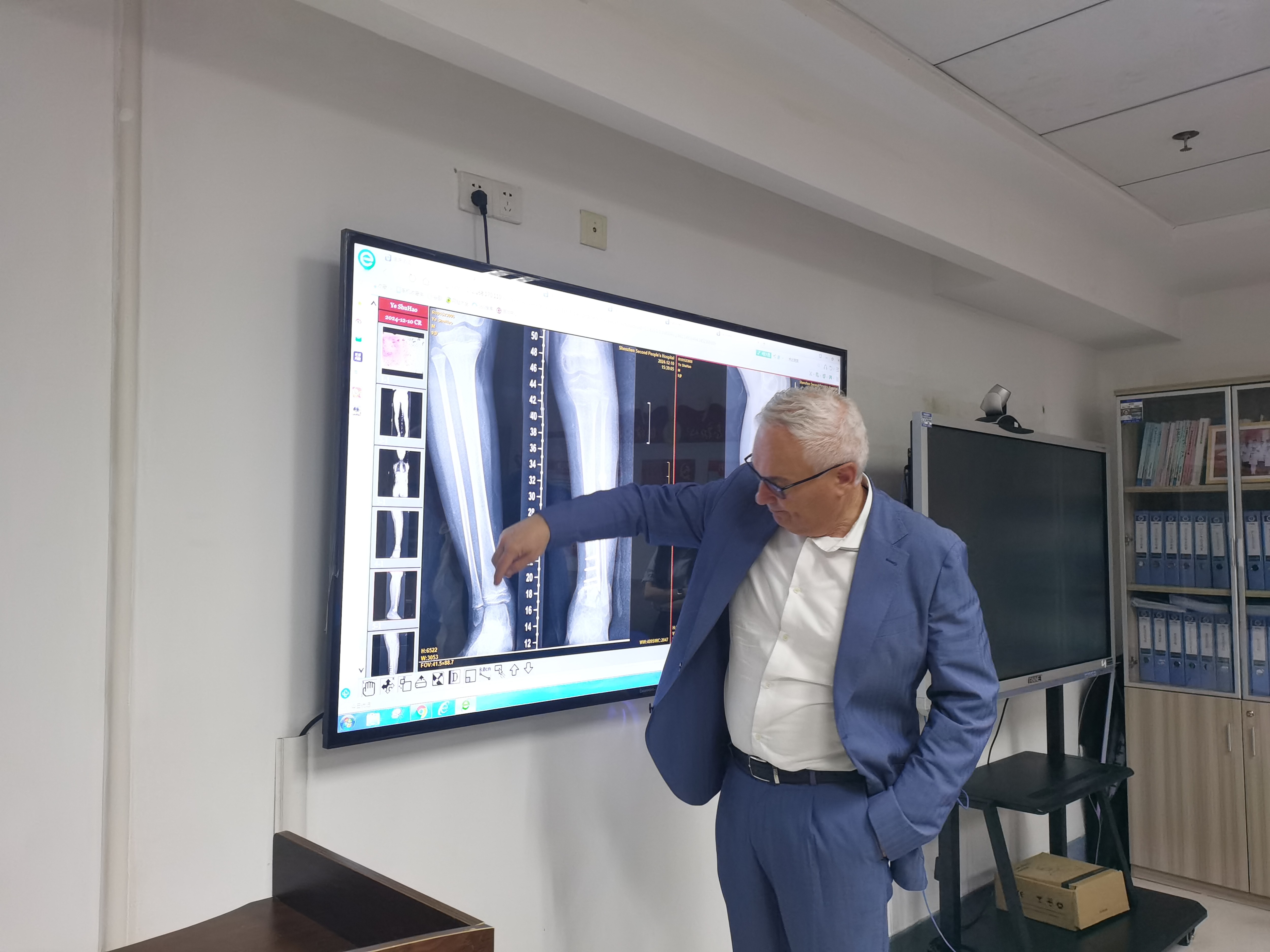
In the afternoon, the Shenzhen Bone Tumor Academic Salon kicked off at Shenzhen Second People's Hospital. Domestic experts included bone tumor teams from Shenzhen Second People's Hospital, Shenzhen Hospital of the Cancer Hospital, Chinese Academy of Medical Sciences, the Eighth Affiliated Hospital of Sun Yat-sen University, and the Shenzhen People's Hospital.
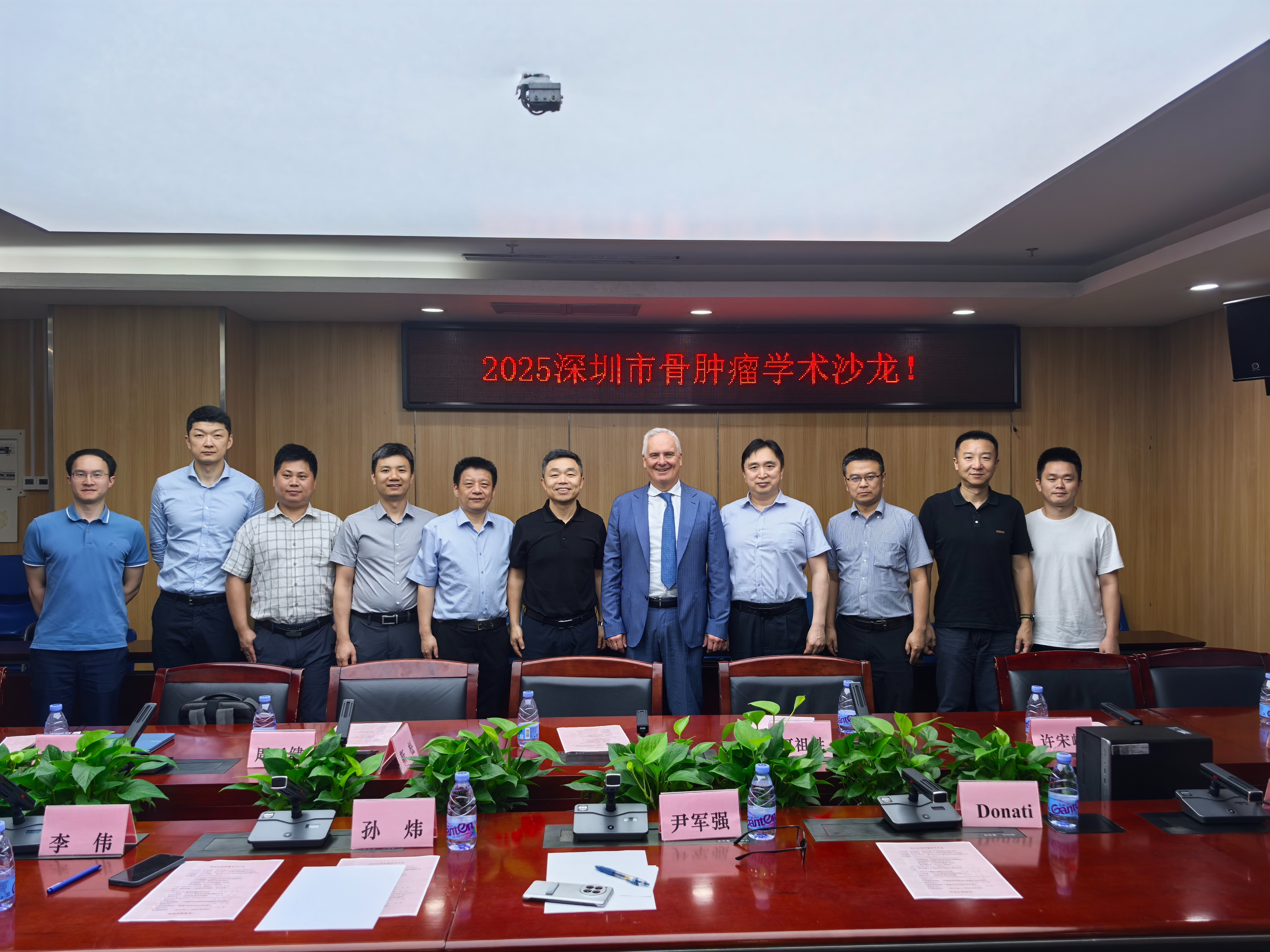
At the meeting, Prof. Donati shared an academic lecture titled “Surgical treatment of bone sarcoma in children under the age of 14 years old”, introducing the use of different types of prostheses in different locations through literature reviews, and engaging in in-depth discussions with the audience on topics such as limb-salvage surgery, the use of magnetic lengthening nails and allograft in reconstruction surgery in children. After the lecture and discussions, Chinese colleagues took turns sharing cases, and Prof. Donati also provided his suggestions for treatment.
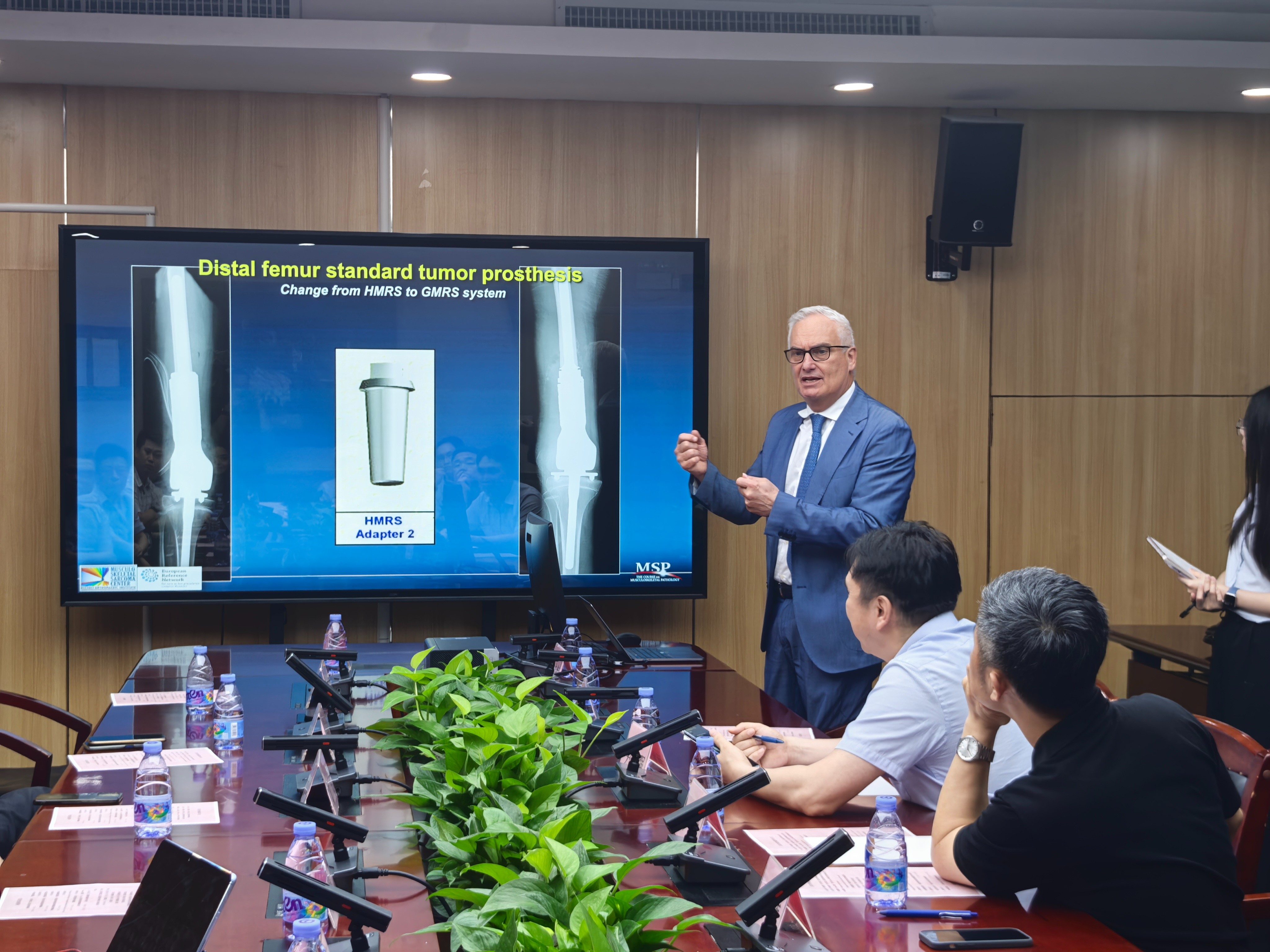
After the meeting, Director SUN Wei, on behalf of the bone tumor team at Shenzhen Second People's Hospital, expressed their sincere gratitude to Prof. Donati for his week-long valuable guidance. Then the entire bone tumor team saw Prof. Donati off, and also expressed their hope to have the opportunity to further study advanced diagnostic and treatment concepts for bone and soft tissue tumors at the Rizzoli Orthopaedic Institute in Italy in the future
